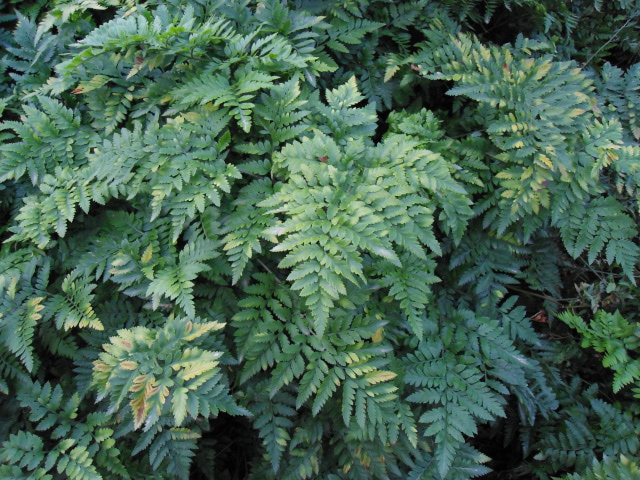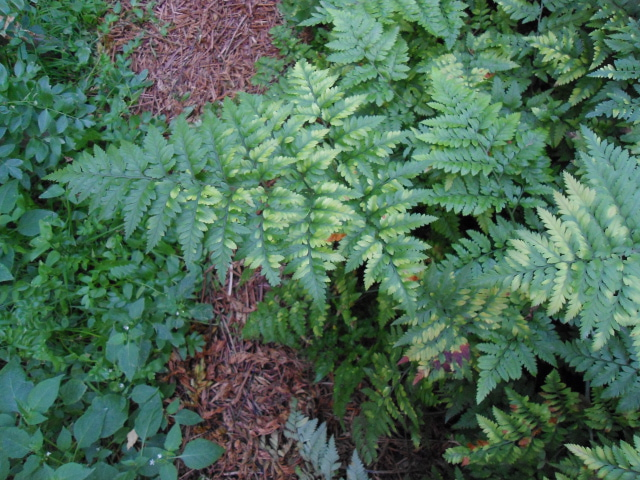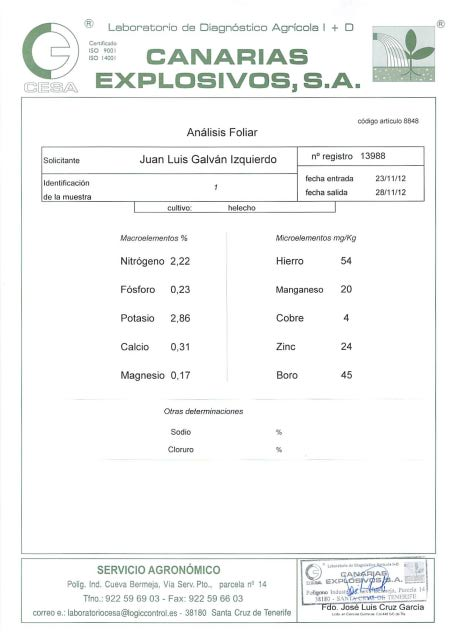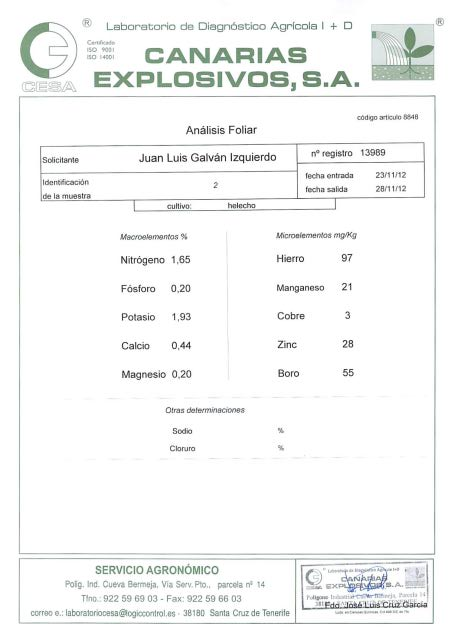Question leave fern
leave fern
 immature leaf
immature leaf
QUESTION: Dear Sir,
I get in touch with you, seeking information about possible physiological disorders and diseases that affect the cultivation of the leather leaf fern. I grow leather leaf fern since 1993, but since three years ago, I am having a serious problem, so far nobody has given the solution. Sincerely,as for me is a mystery, because all the analyses carried out both fronds and rhizomes give negative for fungus.
The most mysterious to me, is not observed in cultivation, a decrease in the number of fronds, i.e., in production, nor in the quality of the fronde, pinna or midvein or damage in the young fronds.
Here I describe the phenomenology: when the fronde is fully developed, but without reaching the age of maturity, a discoloration appears on the edges of the pinnules, which in the process of maturation is going worse, affecting one greater leaf surface. When the fronde reached the level of maturity for harvest, the aforementioned discoloration turns to a brownish yellow color. In the old fronds come to observe reddish brown tones.
Phytosanitary treatments are based on the application by foliar high-pressure Ridomil Gold MZ (mancozeb + metalaxyl).
I have attached an images collection where you can see told in the previous paragraph.
By the way, I write from Tenerife (Canary Islands, Spain).
Yours sincerely,
ANSWER: Dear Domingo;
I have read and re-read your inquiry several times.
I am going to help you to the best of my ability. However, I assume from your request that you are a commercial grower. As such, I am sure you would appreciate that any advice that I may have would clearly not be complete or absolute without the scientific collection and examination of data. In short, I may be able to provide some theories, but only you can tell for sure if they meet the facts in the field.
In 9 of 10 situations, any mysterious affliction of leather leaf fern ends up being related to the dreaded Anthracnose disease, caused by the fungus Colletotrichum. In your case, none of the descriptive or photographic evidence suggest that is the case.
I do not believe your problem is fungal or bacterial, and there is very little data to suggest a viral infection. I also do not see evidence for pest damage in the classic sense (direct feeding damage) but I would not overrule the possibilty of microscopic pests.
My preliminary guess would suggest some nutritional disorder that is manifested in the older foliage in order to support the younger growth. This is fairly typical of several micronutrients (Mg, Mn, etc). To examine this possibility, you would need to obtain several leaf and soil samples and send them off for analysis. I hope these services are available to you in your location.
The deeper issue would be: what is the core cause for the problem? (assuming such a problem truly exists). Have you considered an infestation of parasitic nematodes (specifically Pratylentchus spp.)? I would not be surprised to see an infestation cause the type of disorder that you describe.
Finally, I must admit that I have limited expertise with regards to field production. However, my colleague Dr. Robert Stamps happens to be an established scholar on the subject. I will refer your question to him tomorrow and, hopefully, he can provide us with some more insight.
I appreciate your inquiry and will do my utmost to help solve your situation.
Respectfully;
Dan C.
---------- FOLLOW-UP ----------
 fern leave
fern leave  fern leave
fern leave
QUESTION: I'd like to send you the results of the analysis carried out in various samples of leaves, so you can have a look on the nutrient levels in the leaves, as additional information
Best Whises
AnswerI have studied the leaf analyses. Is there a difference between the samples? Generally, sample 2 is substantially low on almost all nutrients, where sample 1 is borderline low.
There could be many reasons for low nutrition - not only feed rates but also soil type, feed type, chemical sprays, root health, etc.
Only a complete site analysis can properly answer your problem.
My colleague Dr. Stamps had published a complete manual for leather leaf production. It is mostly applicable to Florida, but perhaps you can utilize some of his recommendations. The PDF can be found here:
http://edis.ifas.ufl.edu/pdffiles/EP/EP02700.pdf
Finally, here are his comments regarding tour specific condition:
"The damage is obviously not from a fungal pathogen but could be due to the fungicide(s). Metalaxyl is known to damage some ferns and the damage patterns resemble spray damage. Leatherleaf fern growers here in Florida do not use metalaxyl or other fungicides active on water molds because there is no need to treat since they are not a problem with this crop here. The mancozeb could also be causing nutrient imbalance problems. It would be useful to know when and at what rates the fungicides and any other pesticides, well as any fertilizers, are applied. Additionally, suggest tissue and soil tests be conducted."
Also, from my experience, we discourage the use of Metalaxyl on any ferns. We have seen it to cause substantial damage on several types of ferns.
I hope this input helps guide you in a productive direction but, as I suspected, we are not able to supply an absolute, definitive solution.
DC









